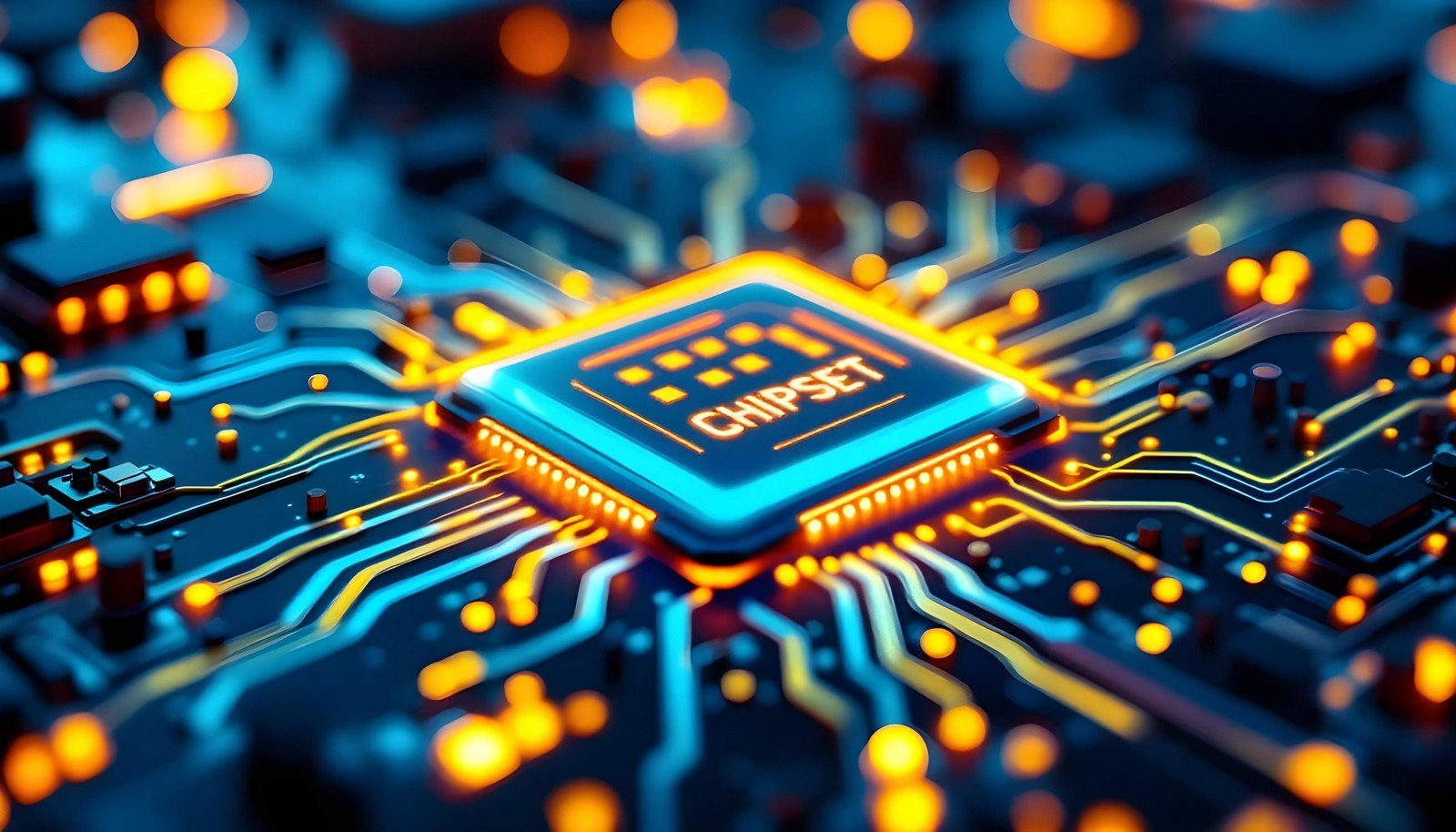Chipset

Quick Navigation:
- Chipset Definition
- Chipset Explained Easy
- Chipset Origin
- Chipset Etymology
- Chipset Usage Trends
- Chipset Usage
- Chipset Examples in Context
- Chipset FAQ
- Chipset Related Words
Chipset Definition
A chipset is a collection of integrated circuits that manage the flow of data between the components of a computer, such as the processor, memory, and peripherals. It acts as the communication hub, controlling tasks like input/output operations and ensuring compatibility among hardware components. Chipsets are key in defining the system’s capabilities, including supported CPUs, memory types, and connectivity options. Modern chipsets are integral to motherboards in computers, smartphones, and other electronic devices, optimizing performance and power efficiency.
Chipset Explained Easy
Imagine your computer is like a city. The chipset is the traffic controller that ensures cars (data) flow smoothly between neighborhoods (processor, memory, and other parts). Without a chipset, everything would be chaotic, and the computer wouldn’t know how to manage its tasks properly. It keeps everything organized and running efficiently.
Chipset Origin
The term originated in the 1980s as computer designs became more modular. Initially, these integrated circuits were discrete components, but advancements in technology allowed manufacturers to combine multiple functions into single packages, giving rise to the term “chipset.”
Chipset Etymology
Derived from "chip," referring to silicon-based integrated circuits, and "set," indicating a collection working together.
Chipset Usage Trends
Chipsets have evolved significantly, with modern versions offering advanced features like AI processing, high-speed wireless communication, and energy efficiency. They are vital in diverse applications, from gaming PCs to IoT devices. With the rise of 5G and edge computing, chipset development is at the forefront of innovation.
Chipset Usage
- Formal/Technical Tagging:
- Computer Hardware
- Electronics Engineering
- Motherboard Technology - Typical Collocations:
- "high-performance chipset"
- "chipset compatibility"
- "integrated chipset solution"
- "next-generation chipset"
Chipset Examples in Context
- A high-performance chipset powers gaming computers, enabling seamless gameplay.
- The smartphone’s chipset manages everything from camera functions to 5G connectivity.
- A laptop with an efficient chipset can provide better battery life and faster processing.
Chipset FAQ
- What is a chipset in a computer?
A chipset is a group of microchips on a motherboard that manages data flow between the processor, memory, and peripherals. - How does a chipset affect performance?
The chipset determines compatibility, features, and performance capabilities of a system, such as memory speed and processor support. - Are chipsets upgradable?
Typically, chipsets are built into the motherboard and cannot be upgraded without replacing the motherboard. - What are the main functions of a chipset?
A chipset handles communication between the CPU, RAM, storage, and connected devices. - How do chipsets differ between devices?
Chipsets in smartphones are designed for power efficiency, while those in PCs focus on high performance and versatility. - What is the role of a chipset in gaming?
Chipsets ensure compatibility with high-performance GPUs, faster memory, and gaming peripherals. - Can chipsets impact software compatibility?
Yes, older chipsets might not support newer software features or operating systems. - What is an SoC (System on Chip)?
An SoC integrates a chipset, processor, memory, and other components into a single package, commonly used in mobile devices. - Are all chipsets the same?
No, different chipsets offer varying levels of performance, connectivity, and feature sets tailored to specific needs. - Why are chipsets important in smartphones?
Chipsets in smartphones optimize performance, battery life, and support features like AI and 5G.
Chipset Related Words
- Categories/Topics:
- Semiconductor Technology
- Computing Hardware
- Integrated Circuits
Did you know?
The first chipsets were used in IBM PCs in the early 1980s and were developed to simplify motherboard design by integrating multiple functions into fewer components, significantly reducing manufacturing complexity and cost.
PicDictionary.com is an online dictionary in pictures. If you have questions or suggestions, please reach out to us on WhatsApp or Twitter.Authors | Arjun Vishnu | @ArjunAndVishnu

I am Vishnu. I like AI, Linux, Single Board Computers, and Cloud Computing. I create the web & video content, and I also write for popular websites.
My younger brother, Arjun handles image & video editing. Together, we run a YouTube Channel that's focused on reviewing gadgets and explaining technology.



Comments powered by CComment